
Interview with a popular copperplate engraver, Yui Koyanagi. Please enjoy reading the first half of this interview by the FFD editorial team!
Interview with artist Yui Koyanagi (part 1)
Drawing anything and everything in front of me
Thank you for your time today. Could you tell us about what got you started in painting?
I don’t remember the exact event that got me into painting, but as a child I was always drawing. I used to draw on the front and back of flyers since pre-school. Although I didn’t know it at the time, my parents actually kept those drawings in a box for me.
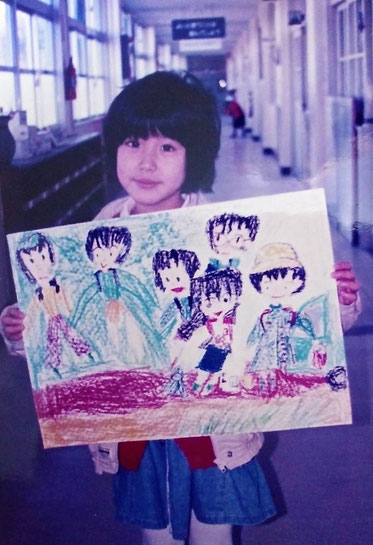
In elementary school, I was surprised to find my kindergarten drawings on the back of flyers kept in a box and felt a profound sense of gratitude and happiness for my parents. I was lucky to grow up in an environment where drawing was a part of my everyday life.
What kind of drawings did you do as a young child?
I used to draw everything and anything: humans, animals, anything in front of me, even Shiitake mushrooms! I was good at drawing, and no matter what I drew, someone complimented me for it. That always made me happy, and I also loved playing the piano as a child.
I want to go to an art prep school! And in return…
In middle school, were you part of the art club?
Yes, I loved to draw, and I joined the art club at my middle school.
By that time, I’d already begun to imagine a future in the arts, thinking “I want to draw and study at a high school with a visual arts program”. My family, on the other hand, were of the mind that school should academically enrich the mind, and thus I went to a regular high school.
Looking back as an adult now, I think that was the right path for me. Over the years, I’ve met many types of artists. One thing I realized looking at their works of art, you recognize that their work is a representation of their experiences. The experiences may be completely unrelated to art or school, and instead result from experimentation or playing around.
Indeed, there are many artists with their unique personalities.
That’s right. When creating a work of art, if you don’t have a solid foundation of your own experiences (‘input’), the painting (‘output’) will be a shallow and superficial one. Like food, a work of art can only be produced from chewing, digesting, and absorbing into your body. By chewing, I mean having a high degree of sensitivity such that one can absorb new information and experiences, and having an extensive knowledge of the world is a prerequisite to produce high quality art. I’m grateful to my parents who gave me the opportunity to widen my horizon by going to a regular high school.
What did you do in high school?
I attended a private school, Jiyugaoka High School.
At that time, the school had just launched an innovative system for higher education where if I met the requirements, I was eligible for a full scholarship for three years, and possibly even waive my entrance exam prep school fees if I were to meet even more stringent conditions!
I desperately wanted to attend an “art academy” outside of school, so I negotiated with my parents as soon as I was accepted into the high school. The terms were that if I kept up my grades and maintained my special student status for three years, I could attend the art academy.
I remember hearing that your top grades earned you commendation by the Governor of Fukuoka!
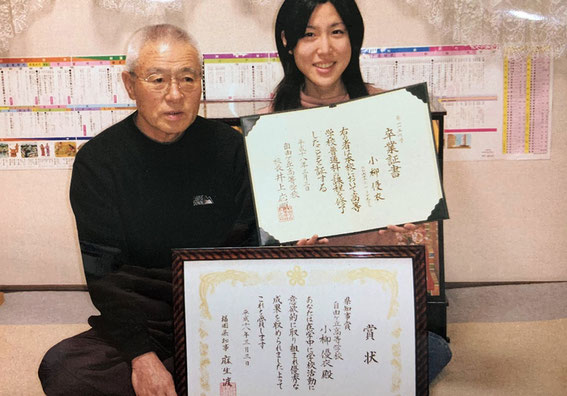
I guess I did. I genuinely enjoyed learning under such fantastic teachers.
Happy times at the art academy
Did you get to go to the art academy?
Yes, I did. My parents agreed to let me go, and I started going to Orio Institute of Art & Design once high school classes started. I had such happy times there.
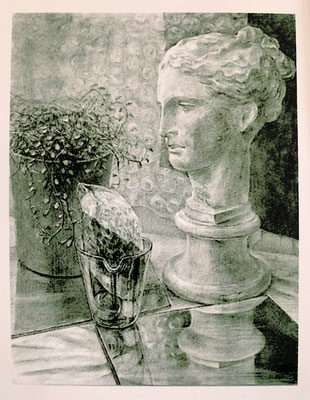
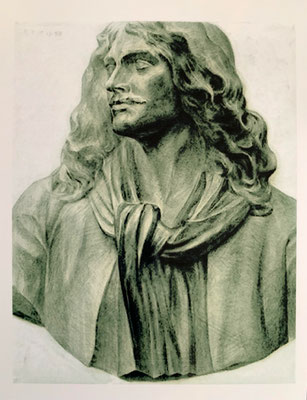
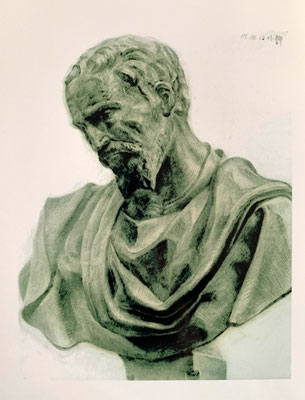
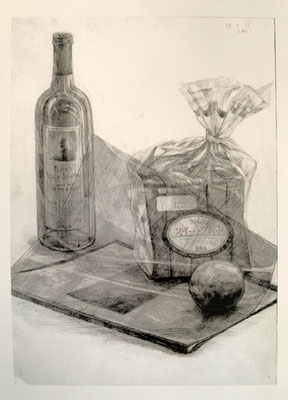
The teachers gave us room to experiment with our style rather than taking a hands-on approach. They told us, “It doesn’t matter how long it takes, you have to find it by yourself.” Even when I asked the teachers to critique my work, they would simply repeat that it wasn’t time yet. I have so many wonderful memories — fleeing the studio when I was burnt out, encouraging each other amongst friends, having laughs with everyone, the adorable mascot dog at the studio, and so on.
During my high school years, I didn’t participate in any club activities, but spent my time at school studying, and after school, learning at the art academy. Gradually, I realized that I desperately wanted to become an artist.
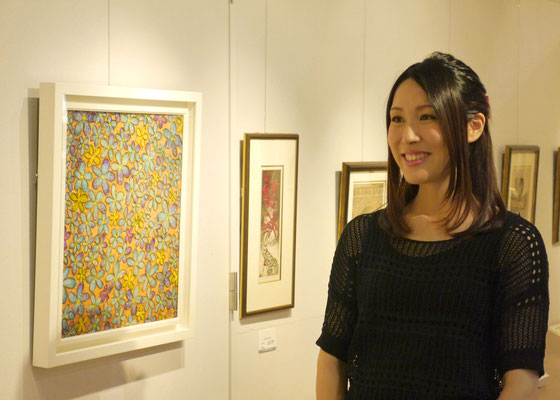
Working on my art from dawn to dusk
In college, I majored in the Arts specialization, where one can both earn a teaching license and develop expertise in the arts. They had a modern system that allowed us to take inter-departmental classes, and I remember I also took psychology classes. The Hirasuna dorm was a great place to live.
They say “Hiroshima in the west and Tsukuba in the east” are the best places to study education.
Yes, they do. However, I stopped taking teaching credits in my sophomore year at Tsukuba. The curriculum to earn a teaching license is incredibly time consuming, and at the time I was already an aspiring painter and wanted to devote more time creating art.
Oh, so was that when you decided to become a painter?
Yes, it was. I worked with oils during my freshman and sophomore years. It wasn’t until I switched to special curriculum printmaking in my junior year that I became immersed in the world of copperplate engravings.
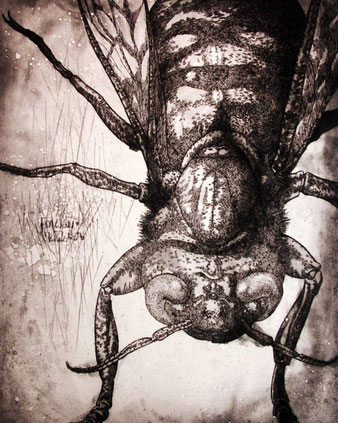
When making engravings, it was easier and more intuitive for me to draw with a needle (a sharp tool used to engrave copper plates during etching).
I spent my junior year fascinated and utterly immersed in engraving, and thoroughly enjoyed the experimentation and practice. I even spent the long holiday breaks at the copperplate studio and didn’t return to my hometown. There were days when I would arrive at the studio in the morning, open the window, start working, close the door and eventually go home without talking to anyone for the entire day. I remember being much happier on days when my working hours would coincide with the upperclassmen. Even if an experiment didn’t go well or if we failed in corrosion or printing, I still enjoyed the creative process.
Self-produced solo exhibition
Were you showing your work outside of school?
Yes, as a college junior, I decided to hold a self-produced solo exhibition in March of 2009. Until that point, I’d never been selected for school-wide exhibitions or won prizes at public exhibitions, so the simplest solution was for me to work part-time and save up some money. I was a bit naive, thinking that if I were to hold a solo exhibition, I should do it in Ginza. Most exhibition galleries there are commission based and don’t charge rent. No wonder that when I cold-called galleries with my portfolio in hand, my visits didn’t yield any relationships with the galleries.
Still, while I was making my rounds in Ginza, I finally found a rental gallery with modest floor space and rent. Even so, it was a large lump sum for me. The venue had two floors, so I split the rent with a student painter friend of mine, and we held a solo exhibition on each floor. Regardless, it was very expensive for a college student…
Indeed, it must’ve been.
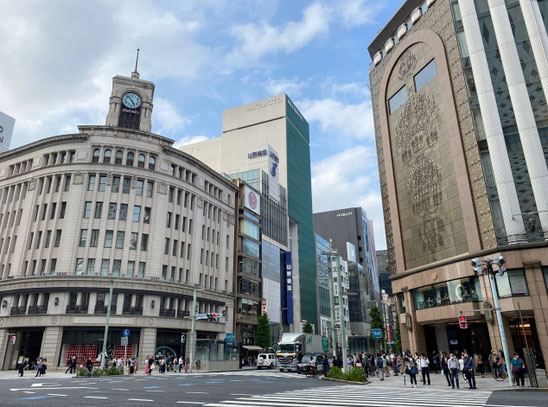
I was adamant that this exhibition would not be in vain, and went around to various spots within the university to publicize the event, even the campus newspaper.
So you did the advertising as well.
I also sent invitations to galleries that I hoped to have relationships with in the future, as well as to those who had previously purchased my work. I sent invitations to pretty much everyone who I wanted to come see my work.
That’s how you prepared for the solo exhibition.
That’s right. Several pieces were sold, and I was able to pay for the venue. Another gallery asked me whether I would be interested in exhibiting my work in their special exhibition. That led to the next one, and it felt like a positive response to my art at my first solo exhibition.
What did you work on after your solo exhibition?
I went to see a printmaker’s exhibition one day, and the artist themselves happened to be there in person. They suggested that I go see Gallery Uehara (previously operated by Fukufukudo in Yoyogi Uehara), and I decided to go right away, seeing as I was still struggling to decide which steps to take next.
I love your positive and proactive attitude, it’s very impressive!
Thank you for your kind words. That’s how I got in touch with Fukufukudo to discuss my portfolio and self-produced solo exhibition. In 2010, as a college senior, I was invited to participate in the Art Debutante (an open competition held from 2010 – 2017, backed by Saitama Shinbun, organized by Fukufukudo. The judges were not from educational institutions but had backgrounds as art sellers at department stores, art dealers, and newspapers). That’s how my college life went by.
A sliver of light in the darkness
Could you tell me what you did after graduating from university?
I graduated college in March 2010. While I was still in college, I’d dressed up in a business suit and attended a job fair just once. I made a U-turn as soon as I went inside the venue without talking to anyone, because I knew that what I actually needed to be doing was planning an exhibition for my art.
That said, I had no money and couldn’t make a living in the Kanto area, and thus went back to my hometown in Fukuoka.
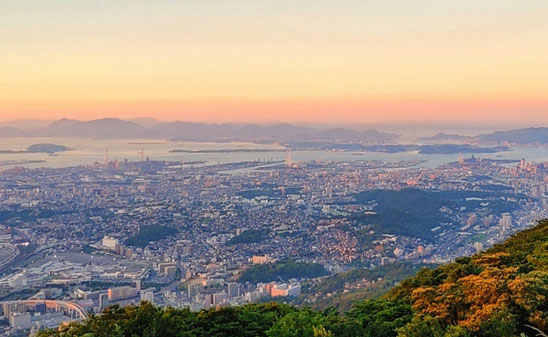
Was this the most difficult period for you?
Yes, I was at my lowest then. My friends had all gotten jobs and I remember them saying, “I got my first salary, and I bought my parents this”, or “I got my parents that”. I remember feeling so insignificant amidst these conversations, and felt miserable.
That was around the time when I submitted my entry for the Art Debutante, all the way from Fukuoka.
And you promptly won the Haruzo Enogu Award!
Yes, I was lucky to be selected for the Haruzo Enogu Award (Haruzo Enogu is Japan’s earliest manufacturer of oil paints, created by Haruzo Nagasaki, at the beginning of the Taisho era). Since then, he’s continued to support and provide us with copperplate paints we need for copperplate engraving. I wouldn’t have come this far without them.
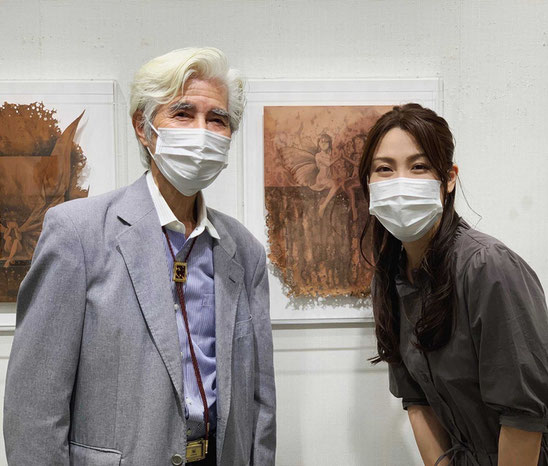
It was also around this time that I began to participate in other group exhibition projects.
My other goal at the time was to hold a larger solo exhibition, which would be my second self-produced solo exhibition. I looked for venues and finally negotiated with a restaurant in Kitakyushu City. There, I exhibited almost every single one of my copperplate prints I’d created during my school days, including some very large sized ones.
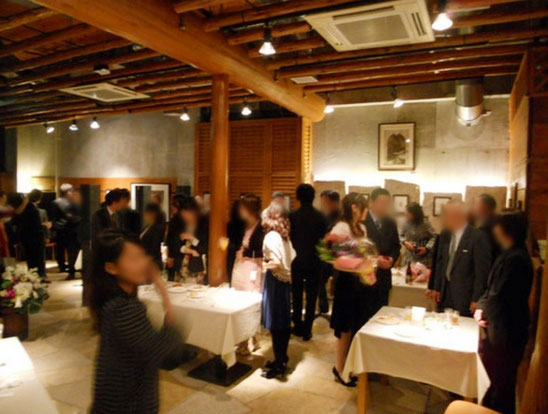
The relationships I built there provided lots of encouragement for my later activities as an artist. Having Okamura-san come all the way from Tokyo to visit me was such an honor.
That’s wonderful. Was that the catalyst for you to hold more exhibitions?
Yes, it was. In 2011, I participated in an exhibition at a department store in Ginza. This was the same year I held a solo exhibition at a special exhibition gallery (Gallery Uehara). It was a very meaningful year for me as an artist.
Camping out at the gallery
So, the year is 2012, the busiest one for you yet. You have three solo exhibitions, two group exhibitions, and a workshop event at the Taro Okamoto Museum of Art.
It was an eventful year, but I also was just getting started as an artist, and prices for my works were still low. There were times when I was short of funds and had to bring a sleeping bag to Gallery Uehara (operated by Fukufukudo) and camp out.

During the exhibition period, I do a public performance in front of the gallery attendees. At the end of the day, I go to a nearby bathhouse, then come back to the gallery and go to sleep in a sleeping bag on the gallery floor. Next morning, I wake up, get ready, clean the floor before the venue opens, and I go talk to the attendees when the exhibition starts again as if it’s just an everyday thing!
I saved money on transportation by taking the overnight bus, though I was sometimes too busy to go back to my hometown.
You were working tirelessly, that was a demanding year for you.
It was a very intense year, but so fulfilling and fun!
(Interviewed by FFD editorial team)
→ continued interview (part 2)
A day in the life of an artist, Yui Koyanagi
What does the daily life of a copperplate engraver look like? We asked Yui Koyanagi, about a day in the life of a copperplate engraver. Let’s dive in.
6:45 Wake up
Breakfast, minimal housework, drop-off at daycare
9:30 Clean the studio, prepare for my classes, work on my art
12:30 Lunch
13:00 Work on my art
15:30 Painting and Modeling class
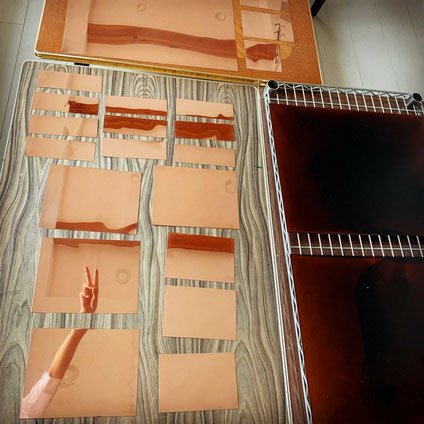
19:00 Dinner, bath time
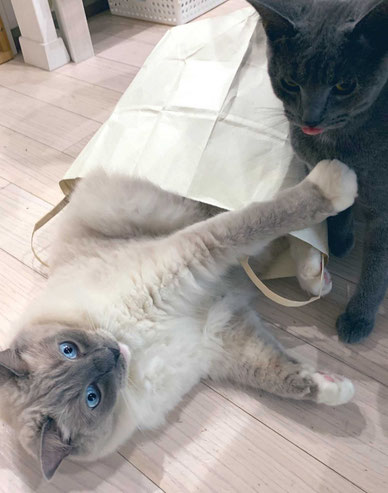
21:00 Put my child to bed
22:00 Work on my art
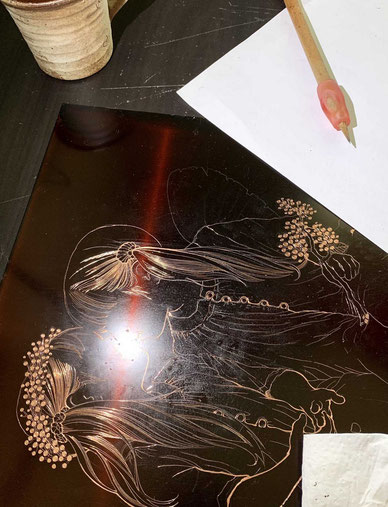
2:00 Go to bed
Sometimes, I go to bed with the kids around 21:00, which balances out my sleep needs.
*My schedule varies by day, but in order to have a long career as an artist, one ought to have a regular routine.
(written by copperplate engraver Yui Koyanagi)
Yui Koyanagi, Artist bio and exhibitions
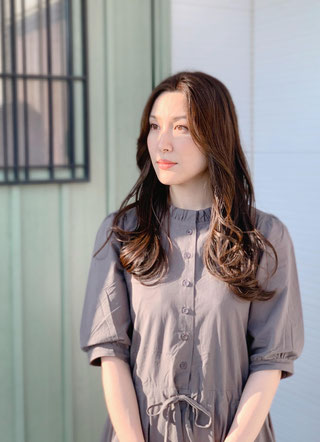
Bio
Born in Kitakyushu City, Fukuoka
Graduated from Jiyugaoka High School
Graduated from Orio Art Institute
Graduated from University of Tsukuba, Fine Arts, Special Curriculum, Printmaking
Exhibitions
2022 Solo Exhibition, Yui Koyanagi, Etched Copper Art, Their Place, Ginza Mitsukoshi
Kobe Art Festa 2022, Kobe Meriken Park Oriental Hotel
2021 Solo Exhibition, OTO gallery
Solo Exhibition, Uroko no Uta (Song of Scales), Fukufukudo @Hilltopia Art Square
2019 Solo Exhibition, Chou no Shizuku (Butterfly Drips), Ginza MItsukoshi
Solo Exhibition, THE LIGHT, FCA
Gakuenmae Art Festa, Nara City Gakuenmae area
THE LIGHT, FUJIMURA CONTEMPORARY ART, Yokohama
2017 Solo Exhibition, Sabi Iro no Mori (Rust Colored Forest), FCA
2016 GINZA ART FESTA, Matsuya Ginza
Until the time is filled, Nagano Tokyu, Nagano
2015 ART OSAKA 2015, Hotel Granvia Osaka
Solo Exhibition, Yui Koyanagi Etched Copperplate Prints and Oil Paintings, Abeno Harukas
Original Drawing Calendar Exhibition, Kokoro Kokoni Koyomi to Tomoni, Ginza Itoya, K. Itoya
2014 Art Debutante URAWA footprints, Isetan Urawa
2013 Solo Exhibition, Fleurir!, OTO gallery
Solo Exhibition, Gene Note, Isetan Shinjuku Main Building
Solo Exhibition, New Melody, Gallery Uehara
2012 Shugyoku no Josei Artist Exhibition (Gem of Female Artists), Ginza Mitsukoshi
lllline@shigagin Shiga Bank, Nagahama North Branch
lllline, Gallery Uehara, Tokyo
Solo Exhibition, Shigure Chou (Autumn Rain Butterfly), Isetan Urawa Store
2011 The traces of corrosion, Gallery Uehara, Tokyo
International Art Expo New York 2011, Pier94, New York
2010 TRIUMPHAL ARCH, la fontaine, Fukuoka
Description of Yui Koyanagi’s work, Promised Boundary
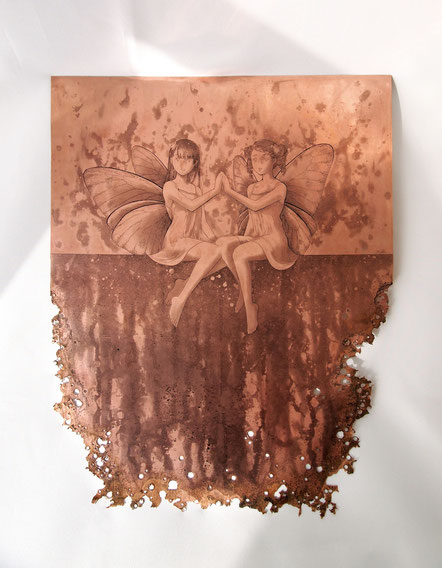
Etched Copper Relief Art.
The technique and materials used for etched copper reliefs are complementary to the artist’s philosophy of “creating in the process of living and decaying”. The traces of corrosion that remain on the copper relief are representations of life itself. In the sense of the theme “creating in the process of decay”, the expression of “rust” is sometimes used in etched copper reliefs.
Etched copper reliefs, which are created using a different technique from reliefs on the exterior of buildings, have their own unique charm.
The reliefs are a work of art in itself, rather than a ‘plate’ of copper. These reliefs are the perfect medium to illustrate Yui Koyanagi’s delicate engraving skills using a fine needle.
Etched copper reliefs use a different corrosion process from that of copperplate engraving. The end result is a distinctive texture.
The artist then further rusts the copper with copper rust. We can see from the artist’s social media posts that she’s passionate about forming her technique through daily experiments and painstaking efforts. As a result, her studio is filled with the smell of volatile solvents.
She explains shyly that her daughter told her, “I used to not like the smell of you making this, but I like it now since it smells like mom’s hard work”.
The episodes of her family show that her works are the very essence of the artist’s own life. She’s always thinking about how to relate to society through her work.
This was created in 2022, the same year that the shocking war in Ukraine intensified. Through creating this piece, the artist reflects on the boundary between the self and others.
Since her early days as an artist, she’s been reflecting on this “boundary between the self and others”. At the root of it is love for others who share different values. That love is directed toward both the other and the self.
The author says, “Life is water that’s been taken out of the water cycle and temporarily put in a tank”. It could be said that those two out at sea are nothing more than water temporarily placed in a tank. They’ve crossed over for now, but they know that they will eventually cross again and return to the water. They’re aware of that boundary between life and death. The borderline is drawn in strong contrast, as if to highlight the events of 2022.
In the center, the two fairies are sitting out at sea making a border line with their palms. Like the line between life and death, there’s always a boundary between two people. We and you (plural), you (plural) and me, me and you (singular). Where do I end and where do you begin? Please don’t come any further until you’re sure.”
The artist confronts various issues through her works, as an artist of her time. Her works must not be missed.
(description by FFD)
Details of Yui Koyanagi’s exhibition
Coming soon.